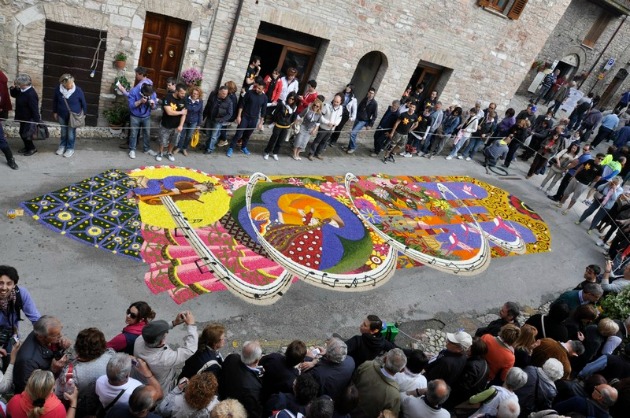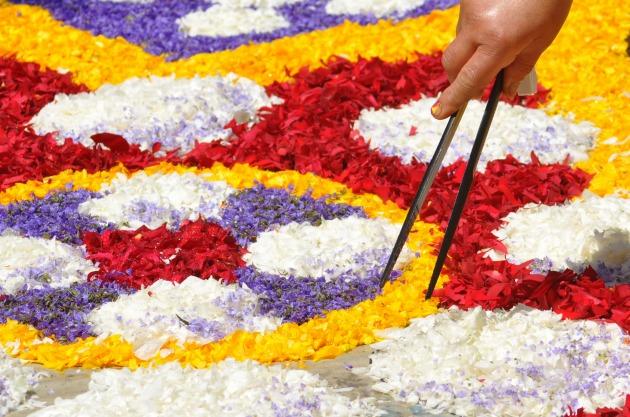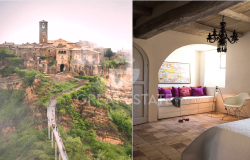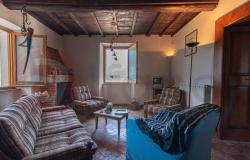During May and June, Infiorata festivals are held in various Italian towns and are definitely a must see if you are planning to visit one of the many regions where these festivals take place. From North to South, there are various options to make sure you will not miss this experience during your next trip to Italy in late spring-early summer. We chose three Infiorate festivals in particular, Noto, Genzano and Spello.
The word "infiorata" literally means "decorated with flowers" and this is exactly how the paintings created for the occasion are made, using flower petals, earth, and sometimes even beans or wood cuttings. Tracing its origins to the 13th century, the Infiorata flower tradition as we know it today, dates back to the seventeenth century. It seems that the first flower carpets were made on the 29th of June 1625 in the Vatican Basilica by Benedetto Drei, head-florist at the Vatican, and his son Peter, who used flower petals like mosaic's tesserae to decorate the basilica on the day of Saints Peter and Paul's feast, the patron saints of Rome.
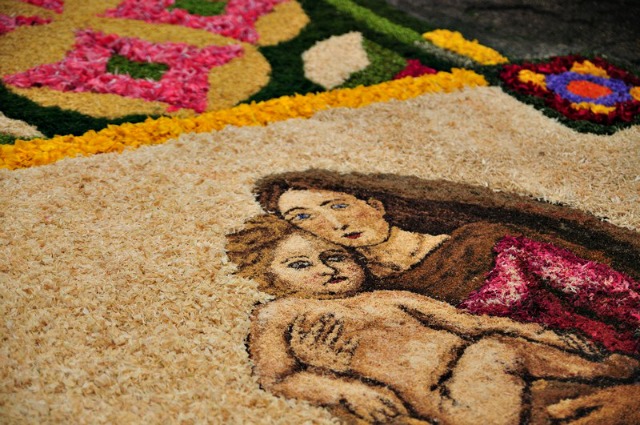
Later, architect Gian Lorenzo Bernini, spread this art in the area around Rome, the Castelli Romani, mainly using it for the famous baroque festivals he organised. However, in Rome this custom disappeared by the end of the seventeenth century, while in the Castelli Romani it was kept alive by the locals. In 1778, this tradition became linked to the Christian celebration of Corpus Domini when in Genzano a carpet of large, brightly coloured flowers was laid down in the centre of the street for its entire length.
Today, Infiorata Festivals are held in various parts of Italy, besides Noto in Sicily, Spello in Umbria and Genzano in Lazio, you can visit similar festivals in Pienza in Tuscany, Orvieto in Umbria, Potenzoni di Briatico in Calabria, Brugnato in Liguria, The Abbey of Chiaravalle della Colomba in Fidenza, Emilia Romagna.
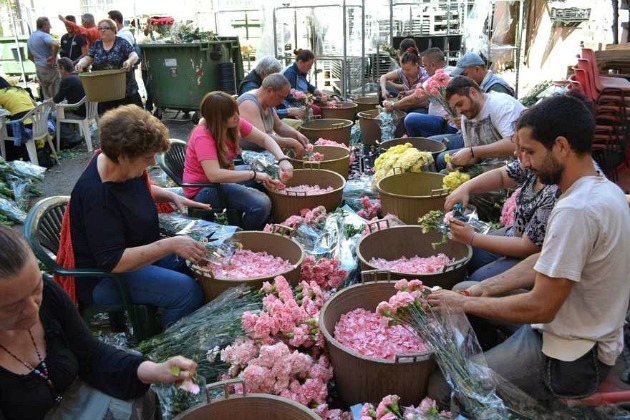
The infiorata artists use flowers with various nuances of colour and their petals to create both simple and elaborate designs on the streets leading up to their churches and abbeys. After months of work on the actual design of the painting, they first sketch them on the floor in chalk and mark each line with soil or coffee grounds. Then comes the job of filling in the marvelous creations with flower petals,using individual petals the way painters use the colours on their palette: broom for yellow, goat’s rue for blue, carnation for red, and wild fennel for green, etc. Some tapestries also use entire flowers and other greenery, making for more three-dimensional scenes.
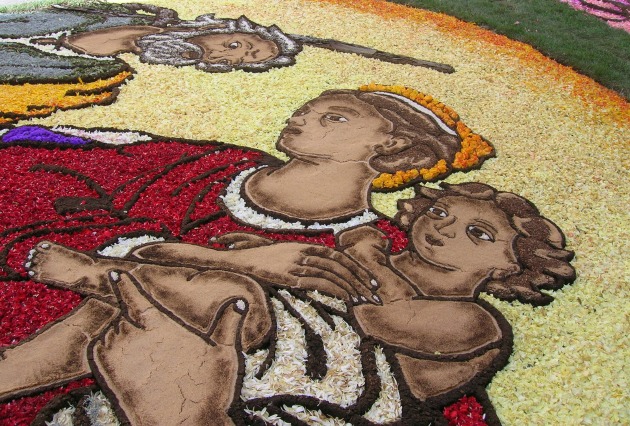
One of the most famous infiorata festivals is in Noto, Sicily and it's usually held on the third weekend of May. However, on mainland Italy, the date for the infiorata is usually the Sunday of Corpus Domini (Corpus Christi), celebrated nine weeks after Easter.
Genzano
Genzano’s Infiorata dates back to 1778 and is held every June on the Sunday of Corpus Domini. It covers about 2,000 m2, and consists of fifteen “flower panels” that use approximately 500,000 flowers, blooms and seeds.
The Infiorata’s crowning moment is when the Corpus Domini procession passes down the centre of the large carpet of flowers. Afterwards, the festival comes to an exciting finish with what is known as the spallamento: when children run down the staircase from the church of Santa Maria, undoing the flowered panels. Over the course of its history, Genzano’s Infiorata has grown from a popular festival to an international event of art, culture and, above all, faith, attracting thousands of visitors from Italy and abroad every year.
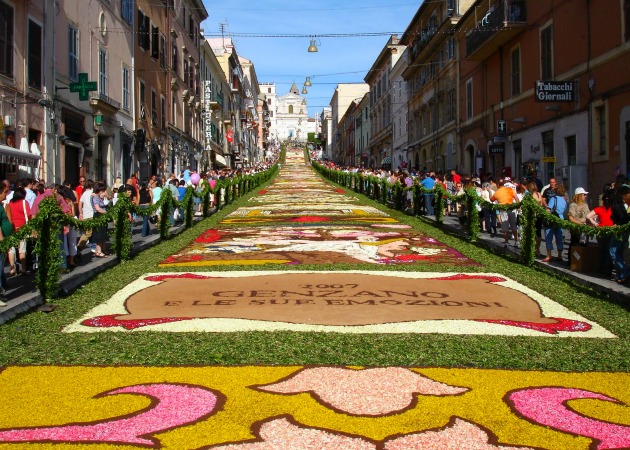
Noto
Every third Sunday of May Noto, a baroque city in South-East Sicily, is quite literally covered in flower petals for the Infiorata di Noto. This event, which is increasingly gaining in popularity, has taken place since 1980. It's a celebration of Spring and a chance for local artists to display their fantastic skills while using the most natural material possible. Flower petals, earth and, sometimes, even beans or wood cuttings. The entire town of Noto takes part in the design of these wonderful creations that have a maximum life span of 48 hours - since they are prepared between Friday and Saturday and showcased on Sunday. Even the local prisoners have a spot reserved for their own piece of flower petal art. The main showcase takes places in Via Nicolaci where people can look down to enjoy the flower images and then up to admire the wonderful baroque balconies.
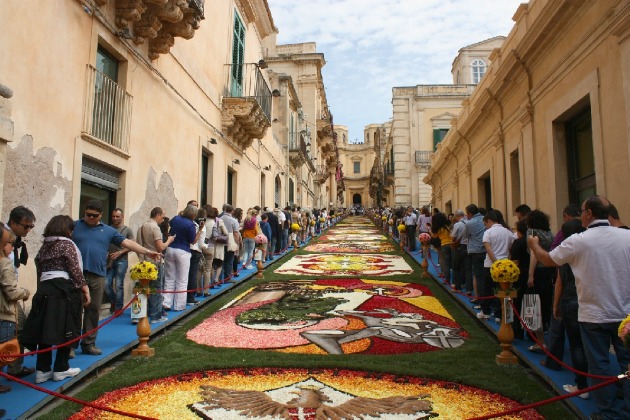
Spello
Spello’s Infiorata began in the 1930's and takes place every year in the small Umbrian town on the day of the Corpus Domini feast, on the ninth Sunday after Easter.
On that night, almost a thousand people work strenuously to create carpets and pictures made of flowers along the narrow town’s streets. The floral creations cover streets throughout the historical centre in preparation to the passage of the Blessed Sacrament carried in procession by the bishop on Sunday morning.
As techniques evolved over time, what was once a long uninterrupted carpet of flowers, characterized by a relatively simple design, became more sophisticated sets of bigger compositions.
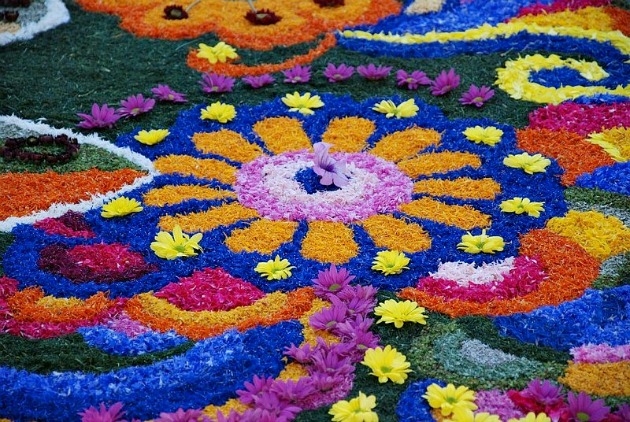 What is so special about Spello’s Infiorata, it that the artists compose their splendid carpets using flowers collected in the wild. While the use of other parts of the plants, like leaves and berries is allowed, the preference is given to the use of petals only, either fresh or dried. The use of wood and any kind of synthetic material is severely prohibited. The gathering and processing of these natural materials starts several months before their actual use, which means that the festival requires a year long effort in order to take full advantage of the variety of seasonal floral species the Umbria's countryside offers.
What is so special about Spello’s Infiorata, it that the artists compose their splendid carpets using flowers collected in the wild. While the use of other parts of the plants, like leaves and berries is allowed, the preference is given to the use of petals only, either fresh or dried. The use of wood and any kind of synthetic material is severely prohibited. The gathering and processing of these natural materials starts several months before their actual use, which means that the festival requires a year long effort in order to take full advantage of the variety of seasonal floral species the Umbria's countryside offers.
